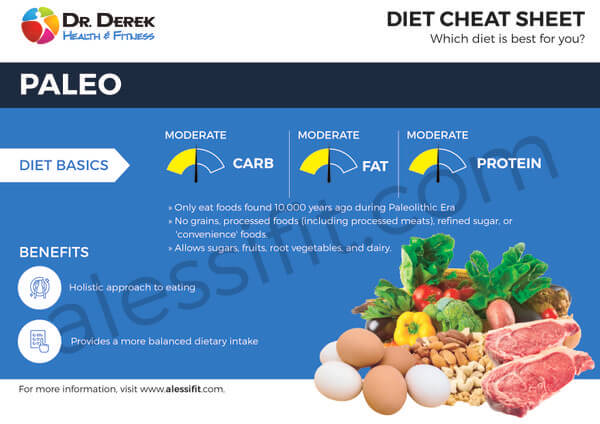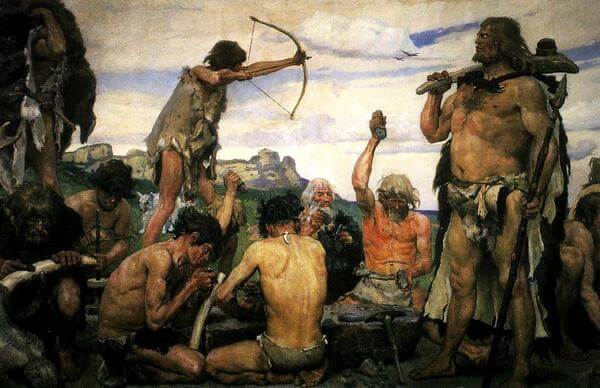Nutrition
29 Paleo Diet Do’s and Dont’s

This entire week I have shared my Keto vs Paleo vs IF Diet Cheat Sheet.
All three approaches have merit (pros & cons) and there is no ‘one size fits all diet.’
I have spent much of my initial time on the Keto Diet. The reason why is because it is arguably the most popular currently in the US and many people have questions.
However, I did want to discuss the finer points of the Paleo Diet as well.

The Paleo Diet or ‘Paleo’ consists of foods that were available 10,000+ years ago during the Paleolithic Era (Old Stone Age).
It was before the advent of agriculture (farming) and people were hunter/gatherers.

It’s a very holistic (natural) way of eating and a balanced diet even by modern standards. Weight loss and fat loss can occur on this diet but some experts argue that not to the degree or speed in which the Keto Diet can burn fat. nyerőgépes játék Since this diet is somewhat higher in carbohydrates (not allowed on Keto) it can work well for athletes and or people who have a considerable amount of skeletal muscle or people who exercises at an advanced level.
The Paleo diet consists of:
- Moderate Carbs (33%)
- Moderate Protein (33%)
- Moderate Fat (33%)
↠If you’d like me to help you figure this out once and for all and discuss your goals personally: Click Here for a Private Fitness & Fat Loss Consultation

Many people have asked me for a more detailed food list for PALEO like the kind I provide my private clients to help them with their food choices. All foods are one of three macro-nutrients:
- Protein
- Fats
- Carbohydrates
Let’s start with Protein:
- Wild caught fish
- Wild caught game (Beet, Bison, Elk, Moose, Deer)
- Cage Free Eggs
- Cage free poultry
All very high in protein absorption (bioavailability) which means the protein you eat gets absorbed better into the muscle tissue. Also, higher in iron than farm raised animals. Lastly, the animal fat is a better ratio of unsaturated omega 3,6,9 than modern animal fat which is advantageous for proper endocrine system (hormone) management. Dietary Fats: These are essential for life and would come primarily from animal fats and oils found in olives and coconuts.
- Animal fat (beef, eggs, chicken, duck etc)
- Nut oil (tree nuts)
- Fruit (coconut, avocado, olives)
Carbohydrates: Not essential for life but useful for energy especially when a person is hunting/gathering most of the day. In modern times, this would be a very athletic person or an individual that works a physically demanding career. The one similarity with the Keto diet is grains (bread, rice, pasta, cereal) is not allowed at all! Unlike Keto, certain fruits, vegetables and natural sugars are allowed, including:
- Squash
- Sweet potatoes
- Parsnips
- Carrots
- Honey
- Berries
- Apples
- Lemons
- Limes
- Tomatoes
Not allowed on Paleo:
- Cereal
- Bread
- Soda pop
- Artificial sweeteners
- Convenience foods
- Processed meats
- Rice
- Pasta
- Corm
- Milk
- Beans
- Cheese
- Anything in a can, a bag or a box
Inconvenience: Unlike Keto, the Paleo Diet does not allow any modern convenience. Foods have to be purchased at a grocery store and prepared. legjobb online fogadóiroda This can be challenging in a fast-paced busy lifestyle. ingyenes online nyerőgépes játékok
The conveniences of picking up beef jerky, deli meats or restaurant meals (all allowed on Keto) are not available. However, clients of mine over the years who have tried Paleo find they feel extremely healthy and energetic. They also enjoy the balance of eating a higher level of carbohydrates.
While fat loss from this approach seems to be less than Keto, it is still effective and beneficial to health.
Lastly, it is also beneficial to the planet as it is regenerative of the soil.
(Watch more on this below)


